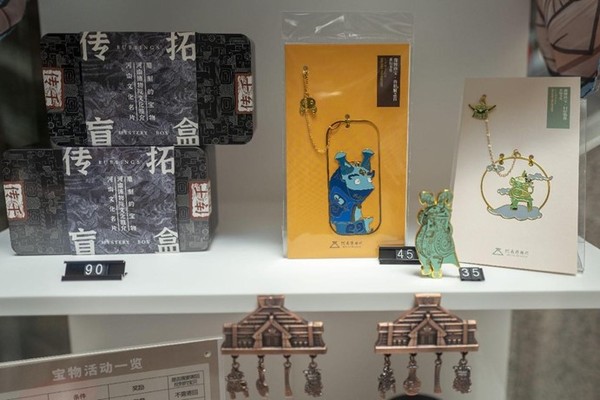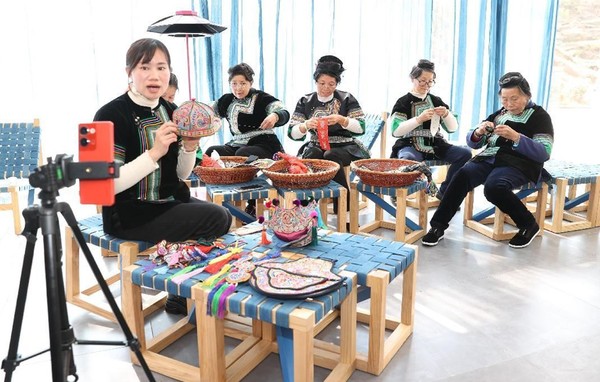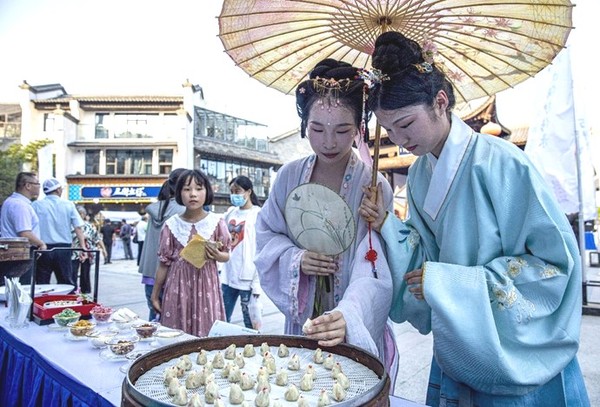By Zheng Na
China boasts rich resources of intangible cultural heritage. So far, the country has listed 1,557 items as national-level intangible cultural heritage. In particular, 43 of them are on the intangible cultural heritage list of the United Nations Educational, Scientific, and Cultural Organization (UNESCO), making China the most enlisted country in the world.
With an aim to systematically conserve and inherit cultural heritage items, creatively translate them into economic profits and achieve innovative development in the specific field, China today is integrating intangible cultural heritage with cultural products, movies and TV dramas, short videos and new technologies, thus making it a part of the modern lifestyle and bringing it to a new phase of development.

Thanks to the emergence of "China-Chic," or the rise of China's native fashion trends over the recent years, products themed with intangible cultural heritage are gaining higher and higher popularity among young people.
For instance, makeup products that come in packages manufactured with the traditional silver forging techniques of the Miao ethnic group have become a hit among both Chinese and foreign consumers; sportswear with traditional Chinese embroideries are sought after by young people; mooncakes and lipsticks launched by the Palace Museum have also become sensational among young Chinese.
According to statistics, there were 32,853 stores related to intangible cultural heritage on the leading Chinese e-commerce platform Taobao last year, up 9.5 percent from 2020, and the transaction volume of intangible cultural heritage-related products increased by 11.6 percent from 2020 on this online marketplace.

Besides, the customer base of cultural heritage-related products has hit 100 million in China, which primarily consists of those born in the 1990s and 2000s.
Kunqu Opera, one of the oldest extant forms of Chinese opera, guqin, a plucked seven-string Chinese musical instrument, as well as other traditional Chinese art forms are also groovy today in China.
In Yushe Entertainment Space at Langyuan Vintage in Beijing, a complex that's home to bookshops, chic restaurants, and coffee shops that are popular among the young generations, Kunqu Opera-related activities are creating a buzz, and there are even online "battle" games of Kunqu Opera.

Over the recent years, intangible cultural heritage has remained a hot topic in the show business. In particular, documentaries, variety shows, as well as TV dramas and films have made remarkable contributions to the popularization and promotion of intangible cultural heritage, igniting people's passion to learn and experience intangible cultural heritage items. Among the big names, there are National Treasure, Marvelous Woman, The Story of Minglan, Nirvana In Fire and A Dream of Splendor.
New technologies and media also have significantly contributed to the widespread dissemination of intangible cultural heritage.
The number of short video users in China exceeded 1 billion as of December 2022, accounting for 94.8 percent of all internet users, said an audio-visual industry report released this year.
Since 2019, short videos themed with intangible cultural heritage items such as embroidery, paper cutting, dyeing, shadow play and bamboo weaving have drawn huge clout, said Yang Chenghu, professor with the School of Art and Communication, Beijing Normal University.
The emergence of short video platforms gives inheritors of intangible cultural heritage an opportunity to demonstrate their skills and also a channel to sell related products.
In 2022, videos related to national-level intangible cultural heritage garnered over 372.6 billion views and received 9.4 billion likes on Douyin, the Chinese version of TikTok. About 1,617 shows were livestreamed by inheritors of intangible cultural heritage each day on the platform on average last year. Moreover, 427 percent more inheritors of intangible cultural heritage received streamer awards.
Livestreaming now serves as a channel from which people learn about the history and stories of intangible cultural heritage. It not only expands the influence of intangible cultural heritage, but also helps inheritors gain more income, which further stimulates their passion for creation and strengthens their determination to pass on traditions.
The arrival of the "metaverse era" is making the inheritance of intangible cultural heritage more digital and tech-ish.
Digital collectibles have become a hot trend in the digitalization of intangible cultural heritage since 2021. According to a report, approximately 4.56 million non-fungible tokens related to intangible cultural heritage were sold in China in 2021, with a total value of more than 150 million yuan ($20 million). Notably, China chic digital collectibles related to intangible cultural heritage were always sold out in seconds after they were launched, which proves the enthusiasm of young generations for intangible cultural heritage-themed digital products.
Experts believe that big data-assisted collection, storage and utilization of information would lead to more efficient spreading of intangible cultural heritage, optimize the channels of the inheritance of intangible cultural heritage, and merge traditional resources and modern technologies, thus creating new opportunities and means to pass on intangible cultural heritage.

